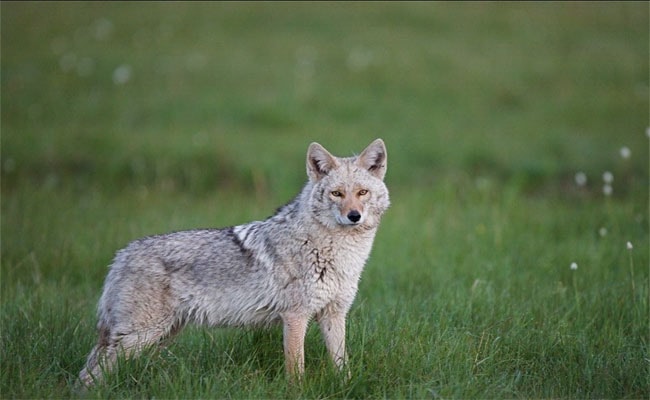The most read article of 2015 on The Economist website was published last October and a new kind of animal is involved. It is a species that has developed over the years in the Northeast of the United States of America. We are talking about the coywolf (or eastern coyote), an animal that has the DNA of wolves, coyotes and dogs - although some experts argue that it's not correct to call it a new species.
According to researchers who have reconstructed the evolutionary history of coywolf, the animal began to develop because of the difficult conditions in which wolves were forced to live in the Northeast of the United States and southern Canada. For years wolves in that area have had a few potential sexual partners, to which were added the effects of deforestation and hunting. With deforestation caused from the search of new arable land, coyotes and dogs began to populate the areas that were inhabited by wolves until then. In this way the inter-pollination between dogs, wolves and coyotes began, which led to the birth of the coywolf. According to studies conducted by Javier Monzon, a researcher at the University of Pepperdine, California, coywolf DNA is dominated by the DNA of the coyote and it is made of dog DNA for one tenth and wolf DNA for a quarter.
Although most of the time the outcome of different animals will be weaker compared to his descendants, the coywolf is much stronger, durable and adaptable. A single animal alone is able to hunt a small deer, it has larger jaws, more powerful muscles and faster legs. A coywolf can live in open land, such as coyotes, and in forests, such as wolves. Thanks to the DNA inherited by dogs it can also adapt to the noise and the presence of man and then populate urban areas, as it is already happening in Boston, Washington and New York. The researchers found that the coywolf is omnivorous: it eats watermelons, pumpkins and other vegetables, in addition to meat and food found in garbage dumps. The specimens that populate urban areas have adapted to cities by becoming nocturnal animals and by reducing the hunting area. According to witnesses, reported by The Economist, the coywolf has also learned to look at the two sides of the road before crossing.
According to Dr. Roland Kays, one of the researchers who conducted the study on coywolves, it is "amazing contemporary evolution story that’s happening right underneath our nose". Some experts, however, argue that the coywolf is actually a new species. They believe this animal is not a new species, but a cross between species that can interbreed with each other producing hybrids. Those who believe the coywolf is a new species claim that in the past the evolution manifested itself through simple hybridization.
Source: The Economist. Image: Inquisitr

Rebecca
INCORRECT DATA! 65% COYOTE!
Posted on